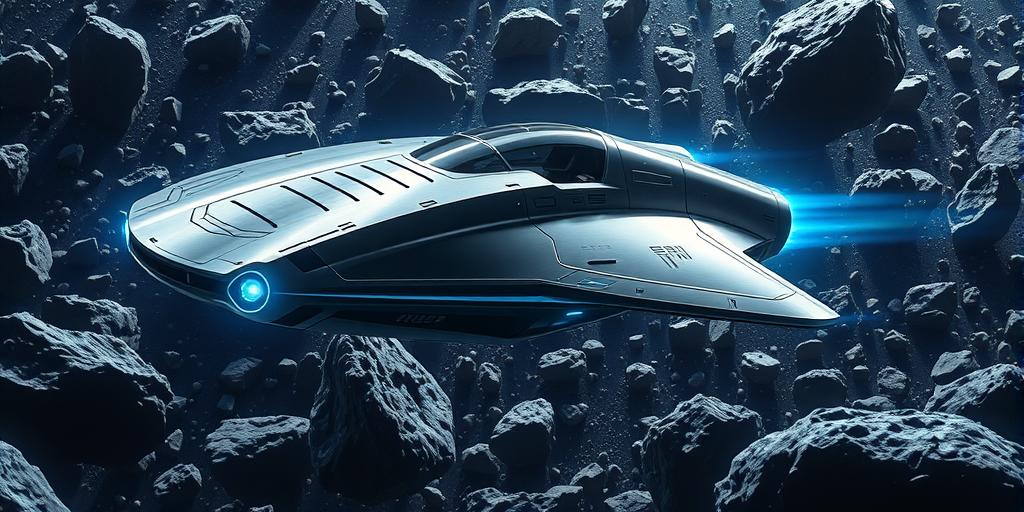Humanity has always gazed at the stars, dreaming of venturing beyond our pale blue dot. Space exploration has captivated imaginations for centuries, pushing the boundaries of technology and human ambition. But what if we told you that the next giant leap for mankind isn’t just about rockets and astronauts – it’s about Artificial Intelligence? Prepare to be amazed as we delve into the incredible ways AI is revolutionizing space exploration, from robotic missions to the search for extraterrestrial life! Get ready for a cosmic adventure like no other!
AI: The Unsung Hero of Space Exploration
Forget clunky robots of yesteryear; modern space exploration increasingly relies on the power of AI. AI algorithms are the brains behind many crucial aspects of space missions, handling complex computations, analyzing vast amounts of data, and making real-time decisions with incredible speed and accuracy. This isn’t science fiction; it’s the present-day reality shaping the future of space exploration. Think of autonomous spacecraft navigating asteroid fields using advanced AI-powered navigation systems, or robots exploring other planets with advanced AI-controlled mobility and obstacle avoidance capabilities. AI’s role goes far beyond simple automation, performing critical tasks with far greater efficiency and ingenuity than any human could manage alone. These advancements are pivotal for optimizing the speed, safety, and overall success of space missions. The impact of using AI in the field of robotics is particularly profound. Autonomous robots using advanced AI are changing the way we explore our solar system. From the Mars rovers to future lunar missions, AI-powered exploration is paving the way for a deeper understanding of our celestial neighbours.
Autonomous Navigation and Obstacle Avoidance
AI is crucial for autonomous navigation of spacecraft and rovers. Imagine a spacecraft traversing the asteroid belt – a dangerous task requiring precise trajectory adjustments and quick reaction to unforeseen obstacles. AI-powered systems can analyze data from sensors, predict potential collisions, and make real-time adjustments, ensuring the safe passage of the spacecraft through this hazardous environment. This capability dramatically expands the scope of potential missions and lowers risks, making more ambitious exploration endeavours achievable.
Data Analysis and Pattern Recognition
Space exploration generates a massive volume of data. Analyzing this information efficiently is key to making discoveries. AI algorithms, particularly machine learning models, excel at identifying patterns and anomalies in vast datasets. This capability is critical for tasks like identifying potentially habitable exoplanets, analyzing images of planetary surfaces for signs of life, and detecting subtle variations in gravitational fields that might indicate the presence of underground resources. With the help of machine learning, we can unlock a deeper understanding of our universe and unravel its many mysteries.
The Search for Extraterrestrial Life: AI’s Role
One of the most exciting frontiers of space exploration is the search for extraterrestrial life. The sheer volume of data collected by telescopes and planetary missions is overwhelming for humans to analyze manually. AI can be employed to accelerate this search exponentially. AI algorithms are capable of analyzing spectral data from exoplanets, searching for biosignatures – chemical indicators of life. By pinpointing potential candidates for habitability, AI algorithms greatly increase the efficiency and speed of the search for life beyond Earth. Imagine the implications of discovering another planet supporting life – this is truly a testament to the power of AI in driving scientific discovery.
Analyzing Planetary Atmospheres
AI is critical in analyzing planetary atmospheres for biosignatures. By sifting through spectral data to identify unique chemical compositions indicative of life, AI allows us to quickly evaluate and prioritize targets for future exploration. This saves valuable time and resources, enabling us to focus our attention on the most promising candidates.
Image Recognition and Pattern Recognition
High-resolution images from space probes can hold clues about potential life forms. AI-powered image recognition systems can identify subtle patterns or features in these images that might otherwise be missed by the human eye. This capability is particularly relevant when analyzing images of planetary surfaces or samples collected by rovers. Advanced algorithms can sift through terabytes of imagery, quickly identifying areas of interest and suggesting potential sites for closer investigation.
AI-Powered Spacecraft Design and Optimization
AI is not only impacting the operation of spacecraft but also their very design. By leveraging machine learning algorithms, engineers can optimize spacecraft design for fuel efficiency, durability, and performance. AI simulations can model the effects of extreme environments on spacecraft components and identify areas of potential failure. Using advanced techniques, engineers can fine-tune every aspect of a spacecraft to ensure its optimal capabilities throughout its mission. This is vital in making space exploration more sustainable and resource-efficient.
Predictive Maintenance and Anomaly Detection
AI-powered predictive maintenance systems can help prevent malfunctions and equipment failures during space missions. By analyzing sensor data, these systems can identify potential problems before they arise, enabling timely interventions and averting costly repairs or mission failures. This capability is especially valuable in the harsh environments of space, where repairs are extremely challenging and costly. This ensures a smoother and more successful mission overall.
Fuel Efficiency Optimization
Minimizing fuel consumption is critical in space exploration due to the high cost and complexity of launching payloads into orbit. AI can optimize spacecraft trajectories and fuel usage, reducing the amount of propellant needed for specific missions. This translates to cost savings, as well as enabling more ambitious exploration ventures by allowing for larger payloads or extended mission durations.
The integration of AI in space exploration is not merely an incremental improvement; it’s a paradigm shift. AI is the key to unlocking the universe’s mysteries and accelerating humanity’s expansion into the cosmos. From robotic missions and the search for extraterrestrial life to designing more efficient and resilient spacecraft, AI is propelling us towards a future where the stars are truly within reach! Are you ready to explore this breathtaking frontier? Let’s embark on this incredible journey together! Learn more about the exciting future of space exploration powered by AI!




